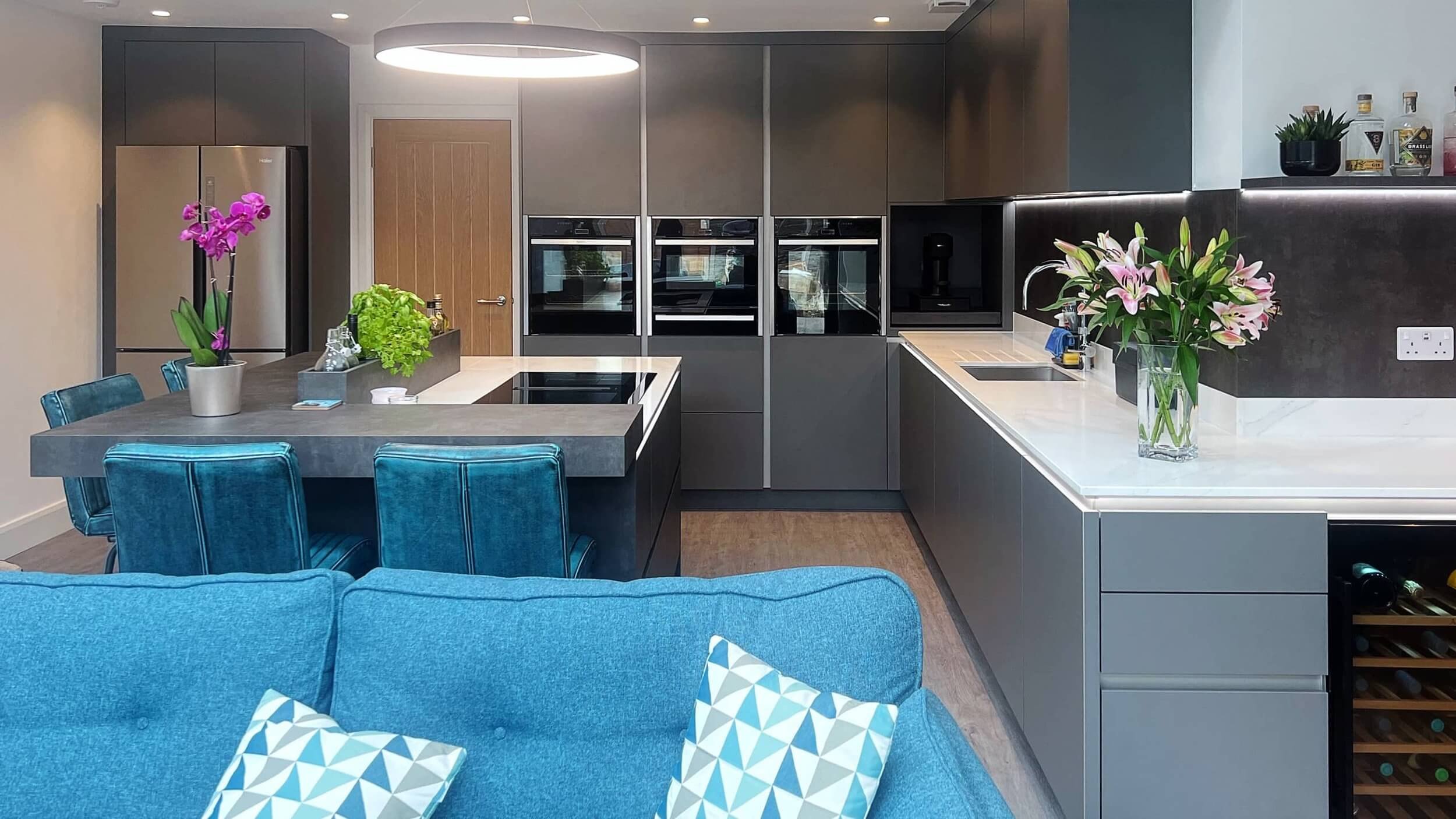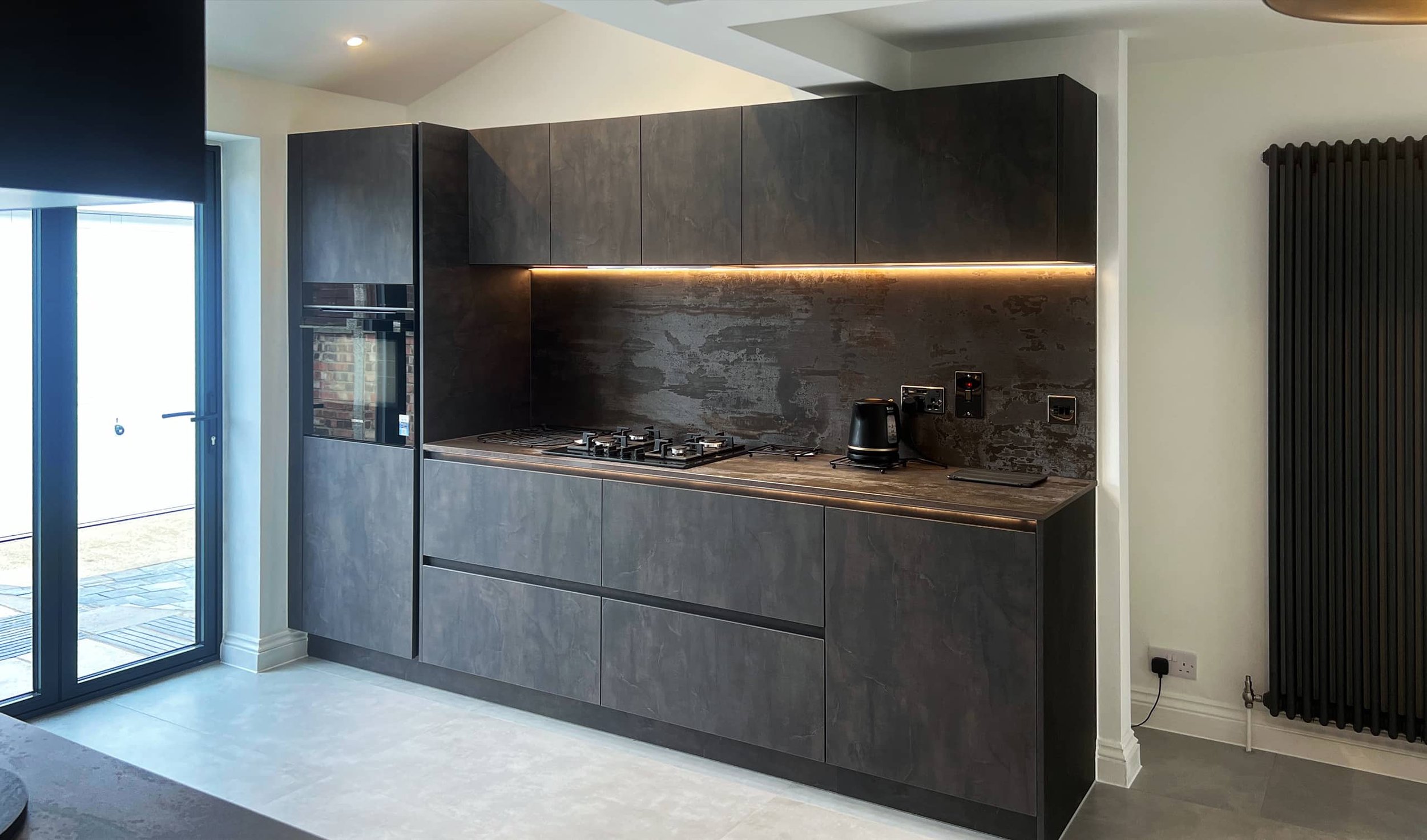Elevate your Interior with a Dark Kitchen
Whether bold and atmospheric or warm and welcoming, dark kitchens create a statement in any space.
In our latest blog, the BCK team explore the trend for darker kitchens and why they are set to be big news for 2024 and beyond…
In recent years, white and pale palettes have been the most popular colour choice for kitchens. It’s easy to see their appeal. Clean, simple, sophisticated and creating a sense of light and space, white and neutral kitchens complement all styles of property and all interior décors.
But now there’s a new trend on the block, as dark kitchens are having a huge moment in the spotlight. Rich, decadent and moody, dark kitchens add instant depth and drama to your home, elevating any interior into something truly special with that all-important wow factor the minute you enter the room.
Contemporary cabinetry
The first element to consider is whether you want a modern or traditional look. For a sleek, contemporary style, our Pronorm collection has something for every space. If you favour a rich, deep wood grain, the Y-Line Oak Sepia kitchen is elegantly understated with a dramatic look that works wonderfully with contrasting white marble, quartz or solid surface worktops.
For something more industrial looking, Pronorm’s handleless Y-Line in Dark Steel Lacquer is stunning when teamed with black or deep grey worksurfaces and splashbacks, highlighted with energy-saving LEDs above.
Pronorm also embraces the dark kitchen trend with its X-Line in Onyx Grey, especially when a dark cement island is added. If you want an extra layer of aesthetic appeal, the Y-Line in Artstone creates a moody feel with a modern edge and can be paired with Dekton ultra-compact surfaces in dark marble or Brazilian granite effect with large white veins contrasting beautifully against the black background.
Let there be light
Dark kitchens set the scene, whether it’s for a luxurious look, a warming feel or a standout statement. To enhance the style as well as its practicality, it’s important not to overlook the importance of lighting.
This means maximising any opportunity for natural light — be it with windows, bi-fold or sliding doors onto the garden or roof lights in the ceiling. We can work with you to enhance your new kitchen with the perfect balance of task, ambient and feature lighting.
This will ensure your cooking and food prep areas are well-lit for safety, with a good mix of energy-efficient lighting to highlight and enhance any architectural features as well as cabinetry, dressers, larders, islands, plinths, splashbacks and shelving. Dimmable lighting is also incredibly useful, allowing you to create a softer, more intimate mood during the evenings, ideal when dining and entertaining.
You can also lift a dark kitchen that may otherwise feel too heavy with lighter or patterned worksurfaces. Marble, granite, quartz and solid surfaces are all perfect materials for adding visual interest while also being hardwearing, durable, scratch, stain and heat resistant too.
Mirrored splashbacks are another design trick that can add a sense of light and space, along with light wood or wood-effect flooring, uplifting shades for wall tiles and mirror-finish appliances. Replacing wall cabinets with open shelving is another way of making a dark kitchen feel lighter and less overpowering, especially if you illuminate the shelves with adjustable wall lights above.
Size matters
Don’t worry if your space is on the smaller side, as dark kitchens work in both compact and larger areas. In fact, smaller rooms can actually work in your favour, creating a cosy, snug-like feel. The key to making a dark kitchen work for both you and your home is to embrace its dramatic tone and go with it. Be bold, be brave, and you won’t look back.




